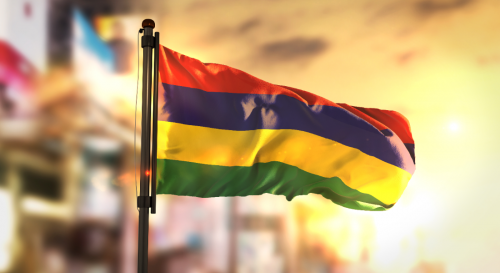
Overcoming enforcement challenges in Tanzania
IP development in Tanzania has seen significant strides in recent years, reflecting the country's growing recognition of the importance of IP in fostering innovation, creativity, and economic growth.
The Tanzanian government has been proactive in aligning its IP framework with international standards and enhancing enforcement mechanisms to protect intellectual property rights (IPRs).
Legislative framework
Tanzania is a contracting state to the following international and regional legal instruments:
- ARIPO (both the Banjul Protocol on Marks and the Harare Protocol on Patents and Industrial Designs)
- Berne Convention for the Protection of Literary and Artistic Works.
- Nice Agreement.
- Marrakesh VIP Treaty.
- Paris Convention for the Protection of Industrial Property.
- Patent Cooperation Treaty.
- TRIPS Agreement.
- UPOV Convention.
- WIPO Convention.
- The International Convention for the Protection of New Varieties of Plants.
- AFCFTA Agreement (Agreement Establishing the African Continental Free Trade Area).
- EAC Treaty (Treaty for the Establishment of the East African Community).
- SADC (the Southern African Development Community).
Enforcement hurdles
Despite these advancements, enforcement of IP rights in Tanzania faces several challenges. Issues such as limited public awareness about IP, inadequate resources for enforcement agencies, and the prevalence of counterfeit goods pose significant hurdles.
However, the government has been taking steps to address these challenges by enhancing capacity building for enforcement agencies, conducting public awareness campaigns, and collaborating with international bodies to curb IP infringements.
In recent years, there have been notable initiatives aimed at strengthening IP protection in Tanzania. For example, BRELA (Business Registration and Licensing Agency, the responsible body for the granting of IP rights in the country) has implemented an online registration system for trademarks and patents, significantly improving the efficiency and accessibility of IP services.
Frustrating issues
According to our experience, despite the online registration system exhibiting rapid performance, when it comes to the formal and substantive examination phase, the trademark registration process can be particularly frustrating and may incur additional, unforeseen expenses for trademark owners.
Usually there are three types of notifications required:
- Requesting for a disclaimer.
- Requesting for an association of trademarks.
- Preliminary refusal based on previous trademarks.
Upon filing a trademark application, the registrar is obliged to examine it and subsequently issue an official response. In this official action, the registrar possesses the discretion to either accept the trademark unconditionally, accept it with conditions such as disclaimers or associations, or outright refuse the application. Predicting the nature of the registrar’s official response is exceedingly difficult, and it is impossible to pre-empt the registrar’s official action.
According to prevailing law and practice, the only prescribed course of action is to await the registrar's official response to the new application and then respond accordingly.
Overcoming challenges
A disclaimer may be issued, for example, when a word is either descriptive of the intended goods and services or the word is common in a class. A word is deemed common in a class if it occurs in three or more trademarks in a specific class. The effect of such a disclaimer is that the client will not obtain individual rights in the word, but rather in the trademark as a whole. Usually, this condition is thus also reasonable and unavoidable. The disclaimer is usually read as follows: “Registration of this trademark shall grant no exclusive rights in the word X, separately and apart from the mark as a whole”.
An association is usually issued when a proprietor files identical or similar applications in the same or several classes. The effect of such an association is that these trademarks will essentially be tied to each other and are thus only assignable together in the future. The reason for the association is to avoid confusion in the market with different proprietors using identical or related trademarks.
Upon receiving the refusal notice, the applicant will be only informed of the application number, trademark designation, applicant name and address. No further information regarding the current status of the trademark or products are reflected in the refusal notification.
As per the registrar’s practice, the only means to obtain detailed information about the cited trademark is through an official search at the registry. Since the registry maintains non-computerised records, individuals must physically visit the registry, pay the stipulated official search fees, and request access to review the official file pertaining to the cited trademark. Due to the manual nature of the search process, it is labour-intensive and the timeframe for acquiring information is unpredictable, contingent upon the availability of the relevant official file.
This official search typically requires a two-week timeframe but is contingent upon any backlog at the office.
As the general rule, the applicant has 30 days to respond to the registrar’s letter. However, upon an application, the registrar may extend the term, by excluding the time, reasonably, taken for the letter to reach the representative, ie, 30 days from the date of the registrar’s letter.
More effort required
However, due to the possibility of requesting the search and, consequently, lack of time to prepare and file the reply, an extension is usually advised and required.
The registrar maintains the discretion to grant or refuse an extension of time. It is expected that the registrar will consider the request and respond within three to 5 months from the filing date, but subject to a backlog of applications.
If the registrar allows an extension of time of up to 60 days, there is a minimal likelihood of further extensions being granted in practice.
When granted, the client and representative are in the position of preparing a response to the refusal based on the search results.
An accepted application will be advertised in the journal for opposition purposes. After the opposition period of two months, the applicant can pay the registration fees and request the registrar to issue the registration certificate.
The development of IP in Tanzania reflects a dynamic and evolving landscape. While significant progress has been made in establishing a robust legal and institutional framework, ongoing efforts are needed to overcome enforcement challenges and fully realise the potential of IP in driving innovation and economic growth.
Through continued reforms, international cooperation and improvements in the registrar’s practice, Tanzania is poised to strengthen its IP regime further and foster a more conducive environment for creativity and business development.
This is a co-published article, which was originally published in the World Intellectual Property Review (WIPR).
Lista de Territórios
Não existem resultados para a sua pesquisa.
- África
- África do Sul
- Angola
- Argélia
- Benin
- Botsuana
- Burkina Faso
- Burundi
- Cabo Verde
- Camarões
- Chade
- Comores
- Costa do Marfim
- Djibuti
- Egito
- Eritreia
- Eswatini (Suazilândia)
- Etiópia
- Gabão
- Gâmbia
- Gana
- Guiné
- Guiné-Bissau
- Guiné-Equatorial
- Lesoto
- Libéria
- Libia
- Madagáscar
- Maiote
- Malaui
- Máli
- Marrocos
- Maurícias
- Mauritânia
- Moçambique
- Namíbia
- Níger
- Nigéria
- Quénia
- República Centro-Africana
- República Democrática do Congo
- República do Congo
- Reunião
- Ruanda
- Saara Ocidental
- São Tomé e Principe
- Seicheles
- Senegal
- Serra Leoa
- Somália
- Sudão
- Sudão do Sul
- Tanzânia
- Togo
- Tunísia
- Uganda
- Zâmbia
- Zanzibar
- Zimbábue
- África (OAPI)
- África (ARIPO)
- Mais Territórios
- Macau
- Maldivas
- Portugal
- Timor Leste
- Marca da União Europeia (EUIPO)
- Marca Internacional (Sistema de Madrid)
- Patente Europeia (IEP)
- Tratado de Cooperação em matéria de Patentes (PCT)




